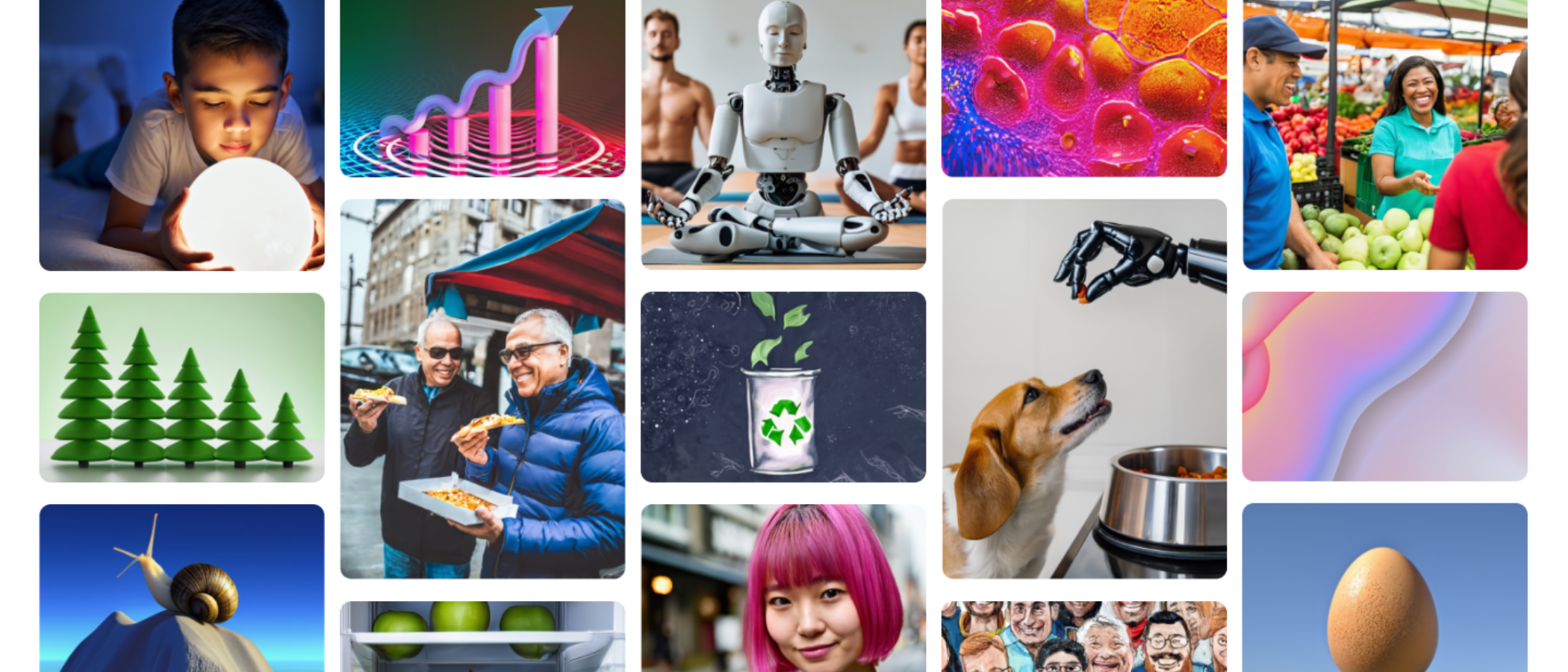The AI image generator that protects businesses: We talk to iStock about balancing creative freedoms and commercially safe tools
We spoke to iStock’s Grant Farhall and Bill Bon about creative freedom, commercially safe images, and what makes a good AI text-to-image prompt

Billed as a commercially safe AI image generator, iStock released its AI photo platform back in January 2024 – and during a live demo of the latest update, we spoke to Chief Product Officer Grant Farhall and Bill Bon, Senior Director of Creative Operations, about creative efficiencies, business-first AI, and what makes a good AI text-to-image prompt.
Famed for its stock media library, the company, owned by Getty Images, has been focused of late on creating a good, usable AI tool that’s accessible at pretty much every level of an organization. And a commercially safe one, too, untrained on copyrighted materials that might bring down unnecessary lawsuits on businesses big and small.
The latest additions to the toolkit, Refine and Expand, add an extra layer of creativity. We took a look at how they worked while discussing iStock’s AI future.
- You can check out the iStock Ai generator by clicking here
Finding creative efficiencies
Business may be the order of the day, but Farhall told us that iStock has made sure the tool was fun to use. Fun. It’s a word that’s repeated often during the live demo, feeling like a byword for simple, accessible, engaging. And it’s hard to deny that using certain AI art generators can feel like a slog, especially professional tools with their unintuitive or overly complex interfaces. In contrast, iStock is trying to balance exciting capabilities with usability – a factor the company feels gets overlooked in the rush for AI-everything. “It’s all about making lives easier,” said Farhall, “Letting users create in an elevated way.”
That’s evidenced from the start, with the platform employing a helpful prompt builder that guides you through the key information needed to generate AI images. Better prompts means better results.
Refine and Expand, the platform’s latest tools, are another example of this. The former lets users highlight areas of AI-generated images, then prompting the tool to add objects and people, or tweak elements of the image. In one example, we’re shown how easy it is to add a scarf to a photorealistic image of a man, just by selecting the neck area and telling the AI what to add. In another, a tiger was added to a jungle scene.
Expand, a tool favoured by designer Bon, intelligently adds to the background. Streets become longer, more populated, woods thicker – and, Bon explained, those expansions should make contextual sense. The social media advantages for time-poor designers and non-designers, where every platform demands different image dimensions, are clear.
Are you a pro? Subscribe to our newsletter
Sign up to the TechRadar Pro newsletter to get all the top news, opinion, features and guidance your business needs to succeed!
The focus is on the ability to “expand what’s possible”, said Farhall, “finding creative efficiencies”. With AI, anything is possible.
Well, almost anything.
It’s rare in a live demo that we’re intentionally shown the limitations of a product. Here, what the tool can’t do is announced with the sort of fanfare usually reserved for massive updates, new features. The iStock AI Generator is, effectively, a safe – commercially safe – sandbox. In part the goal, said Farhall, was to prove you don’t need a mass dataset culled from every corner of the internet to train an AI; that it’s possible to provide a transparent process where creators are compensated and businesses can feel confident using the platform.
The AI generator can’t, for instance, generate existing logos or celebrities or copyrighted images. Nike swooshes, Taylor Swift, Mickey Mouse, the golden arches of McDonalds - as far as the iStock AI is concerned, these things simply do not exist. They’re not part of the training model, they’ll never be generated. Nor will a company’s AI generations get cycled back into the model. It’s a creative silo for businesses.
Since unveiling its tool, iStock has gone hard on legal business protections. From the beginning, it offered the same $10K legal coverage enjoyed by users of its pre-shot media library. The company hopes this will allow for seamless use between its AI and the stock media platforms.
That’s essential, Farhall explained, since the real issue with AI is that it’s always “looking back.” He cited the pandemic as an example, where photographers could be commissioned to get current images. Users, then, should get the best of both worlds. Expect closer integration between the two worlds, too. We’re told the ability to use the AI tool to edit and refine pre-shot is in the pipeline, and users will also soon be able to fine-tune AI images to create branded generations in May.
Before wrapping up, we ask veteran prompt writer Bon the secret behind what makes a good text-to-image prompt? He explained that it’s experimentation, but a good AI text prompt places important details at start. Make it long, 30-40 words using cinematic language, like whimsical and spooky, and include specifics like subjects and lighting style. And use image filters to make photoreal images more filmic. So, now we know.
Read more from TechRadar Pro

Steve is B2B Editor for Creative & Hardware at TechRadar Pro. He began in tech journalism reviewing photo editors and video editing software at Web User magazine, and covered technology news, features, and how-to guides. Today, he and his team of expert reviewers test out a range of creative software, hardware, and office furniture. Once upon a time, he wrote TV commercials and movie trailers. Relentless champion of the Oxford comma.